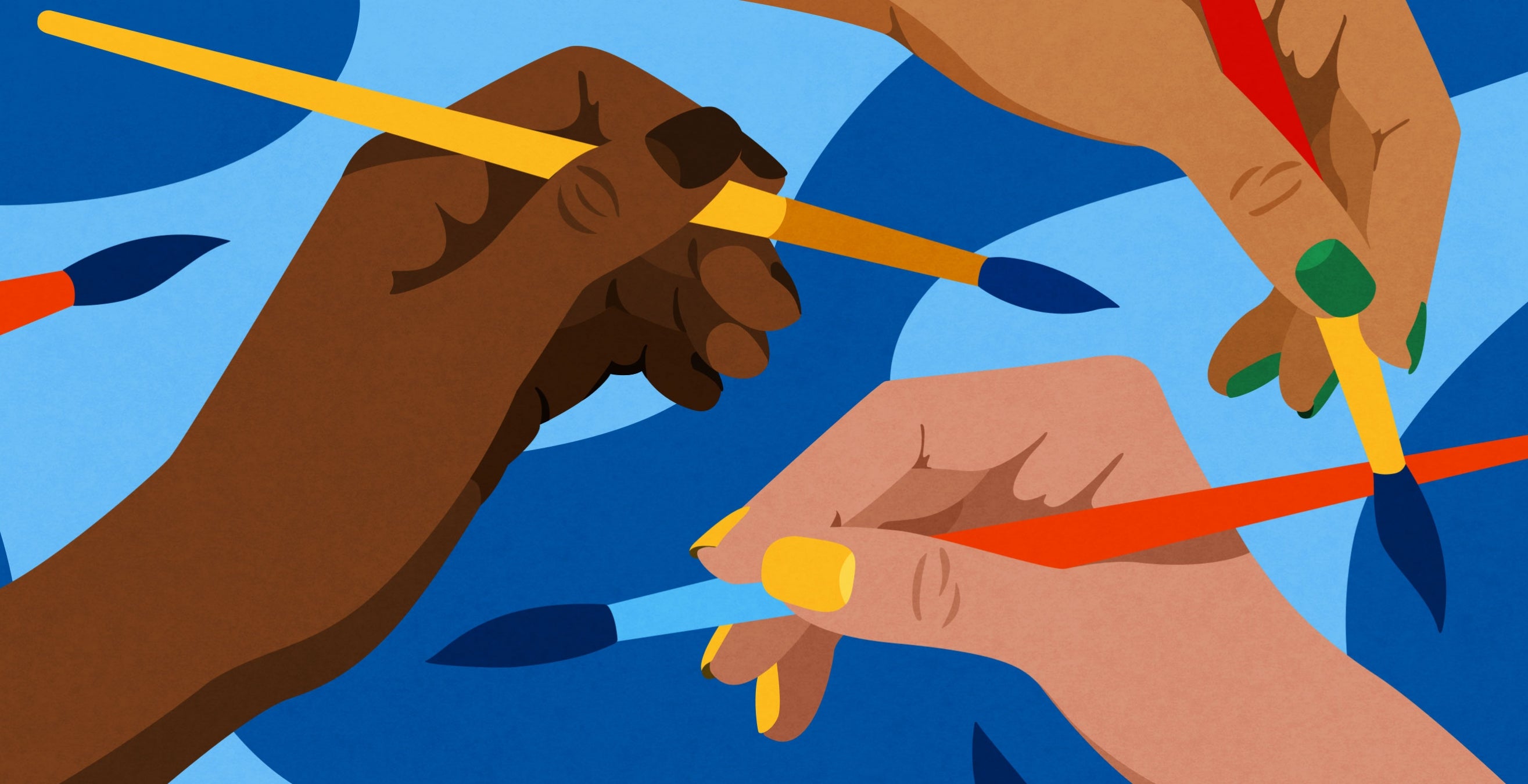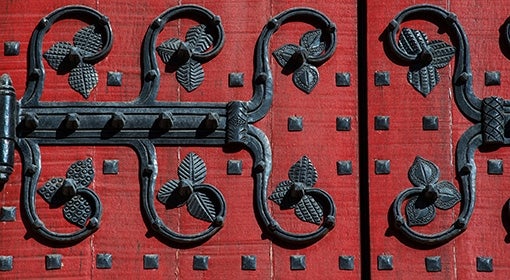Taran Wagner crouched on the sidewalk and dipped his brush into a bucket of paint, saturating it in color. Standing again, the criminal justice major at Pitt-Greensburg swept it across a giant canvas in bold strokes.
Next to him, classmates, locals and youth on probation for a variety of delinquent offenses did the same. Together, they were creating a colorful mural to hang on a brick wall outside of Ashley’s Kitchen, a restaurant in New Kensington, Pennsylvania. The mural featured depictions of local luminaries and paid homage to the steel town’s history.
But Wagner and the others weren’t just there to paint. They were confronting stigma, forging mutual respect and creating community. That’s the art of restorative justice — repairing relationships and systems broken by crime and helping people feel redeemable.
Wagner comes from a family of law-enforcement professionals and grew up wanting to be a park ranger. Yet, he says he had a limited understanding of the criminal justice system until he joined the mural project organized by Tim Holler, an associate professor of criminal justice at Pitt-Greensburg and the head of the Community Arts Reintegration Project (CARP).
Inspired by the creative collaboration of Mural Arts Philadelphia, Holler began CARP at Pitt-Greensburg in 2015 with the aim to use public art to reintegrate youth who are involved with the justice system back into Western Pennsylvania communities.
The mural making is a coming together, says Holler, “a way for people to share in communal thought and decision-making and create a community not just in physical proximity, but also in spirit.”
This kind of therapeutic process is a key component of restorative justice and helps adjudicated youth reconcile with victims and the larger community.
Wagner was a junior when he took Holler’s class and went out on the weekends to help with the mural. He graduated from Pitt-Greensburg in 2021 and saw policing and justice up close when he worked for a short time as a 911 dispatcher.
He’s now a graduate student at West Penn Edinboro studying education with a focus on leadership and administration. But his appreciation for criminal justice and the lessons he learned about dignity and humanity have gone with him.
Wagner says Holler worked hard to teach students not to prejudge and to know everyone is capable of mistakes and redemption. Wagner now wants to pass on his new perspective of restorative justice — to see everyone as someone with potential — to the generation he’s poised to lead.
For Holler, too, the work continues. A mural project centered on diversity is in the planning stages for the Pitt-Greensburg campus, and he has high aspirations for its impact. Restorative justice creates dialogue, he explains, which can be healing not only for individuals injured by single acts of crime but also for groups of people wounded by larger systems of oppression that target race, gender or other identities. Holler says having a mural on campus could draw students into conversation — composing a palette of hope that connects Pitt with the challenges of inclusivity, equity and building respect with and in the local community.
“Creating a communal spirit is powerful for combating harms past, current and future,” he says.
Using art to achieve such a goal promises a bounty of beauty.
This story was published on January 26, 2023. It is part of Pitt Magazine's Winter '23 issue.





